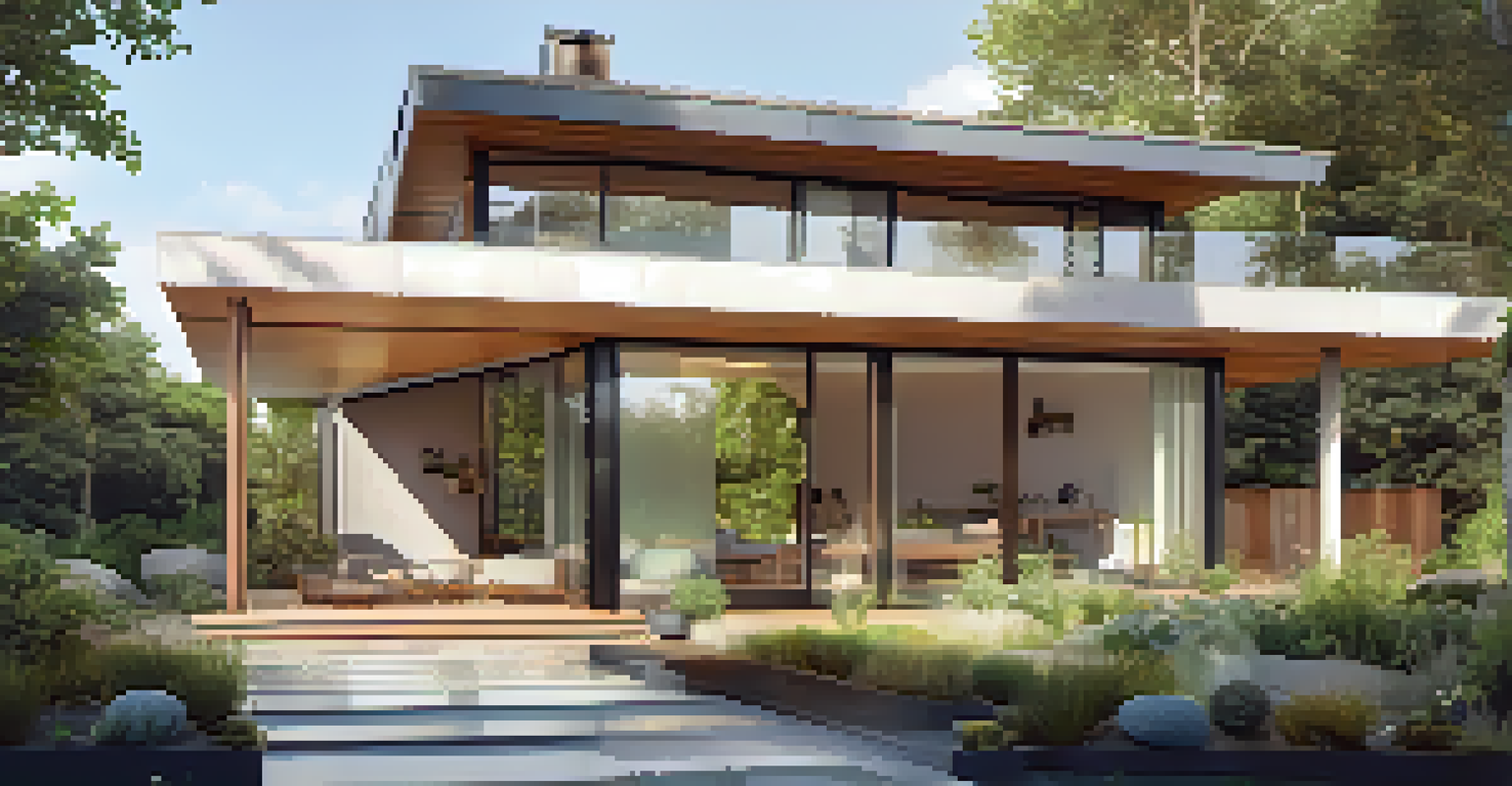Eco-Friendly Renovation: The Role of Certifications

What Are Eco-Friendly Renovations and Why They Matter
Eco-friendly renovations refer to home improvement projects that prioritize sustainability. This means using materials and methods that are not harmful to the environment, ultimately reducing your carbon footprint. With climate change becoming a pressing issue, these renovations play a crucial role in creating healthier living spaces.
The Earth does not belong to us: we belong to the Earth.
Not only do eco-friendly renovations help the planet, but they can also improve your home’s energy efficiency. For instance, installing energy-efficient windows can keep your home cooler in summer and warmer in winter, leading to lower utility bills. This dual benefit of saving money while being environmentally conscious makes these renovations appealing to many homeowners.
Furthermore, eco-friendly renovations often enhance the overall quality of life. By using non-toxic materials, you create a healthier indoor environment for your family. This holistic approach to home improvement is gaining traction as more people recognize the interconnectedness of their living spaces and the planet.
Understanding Green Certifications in Renovation
Green certifications are third-party endorsements that signify a building or renovation meets specific environmental standards. These certifications can guide homeowners in making informed decisions about eco-friendly materials and practices. Popular certifications include LEED (Leadership in Energy and Environmental Design) and Energy Star.

Obtaining a green certification can seem daunting, but it essentially involves demonstrating compliance with established guidelines. For example, LEED certification takes into account everything from water efficiency to sustainable site development. This detailed framework helps ensure that renovations not only look good but also contribute positively to the environment.
Eco-Friendly Renovations Explained
These renovations prioritize sustainability by using materials and methods that reduce environmental impact and improve energy efficiency.
Having a certification can also add value to your property. Many homebuyers are increasingly looking for energy-efficient homes, and a certified eco-friendly renovation can make your property stand out in a competitive market. It’s a win-win situation, enhancing both your home's appeal and its environmental footprint.
Popular Eco-Friendly Certifications Explained
Several eco-friendly certifications cater to different aspects of building and renovation. The most recognized include LEED, Energy Star, and the National Green Building Standard. Each certification has its specific focus, from energy efficiency to sustainable materials, offering a range of options for homeowners.
Sustainability is no longer about doing less harm. It's about doing more good.
For instance, Energy Star focuses primarily on energy efficiency, ensuring that appliances and systems meet strict energy performance standards. This is especially valuable for those looking to reduce energy consumption without sacrificing comfort. Meanwhile, LEED covers a broader scope, including site sustainability, water efficiency, and indoor environmental quality.
Understanding these certifications helps homeowners make choices that align with their renovation goals. Whether you want to improve energy efficiency or promote sustainable practices, selecting the right certification can guide your renovation efforts effectively.
The Process of Certifying Your Renovation Project
Certifying your renovation project typically involves several steps, starting with planning. You’ll need to determine which certification aligns best with your goals and understand its specific requirements. This initial research is crucial for laying a strong foundation for your project.
Next, you'll gather documentation as you work through the renovation process. Documentation may include materials used, energy consumption data, and proof of sustainable practices. This step can feel overwhelming, but it ensures that your project meets the standards set by the certification body.
Understanding Green Certifications
Green certifications, like LEED and Energy Star, guide homeowners in making informed decisions about eco-friendly practices and can enhance property value.
Once you’ve completed the renovation, you submit your documentation to the certification organization for review. They will assess your project against their criteria, and if everything checks out, you’ll receive your certification. This final step not only validates your efforts but also provides tangible recognition of your commitment to sustainable living.
Benefits of Eco-Friendly Certifications for Homeowners
Homeowners enjoy numerous benefits from eco-friendly certifications, with potential cost savings being a significant one. Certified renovations often lead to lower energy bills since they emphasize efficient systems and materials. Over time, these savings can offset the initial costs of the renovation.
Additionally, certified homes often see increased property values. With a growing number of buyers prioritizing eco-friendly features, a certified home stands out in the market. This can translate to a quicker sale and a better return on your investment.
Beyond financial advantages, certifications provide peace of mind. Knowing that your renovation adheres to recognized standards can make you feel good about your choices. It’s a step toward a sustainable lifestyle that not only benefits you but also contributes to a healthier planet.
Common Misconceptions About Eco-Friendly Renovations
Many people believe that eco-friendly renovations are always more expensive, but this isn’t necessarily true. While some sustainable materials can have a higher upfront cost, energy savings over time can make them more economical in the long run. Plus, there are often grants and incentives available for green renovations that can help offset initial expenses.
Another misconception is that eco-friendly renovations compromise style for sustainability. In reality, sustainable materials and designs can be just as aesthetically pleasing, if not more so, than traditional options. Many designers are now focusing on creating beautiful, functional spaces that prioritize both form and function.
Benefits of Eco-Friendly Certifications
Homeowners can enjoy lower energy bills, increased property values, and peace of mind knowing their renovations meet recognized sustainability standards.
Lastly, some homeowners think that eco-friendly renovations require a complete overhaul of their existing space. However, even small changes, like switching to energy-efficient light bulbs or using low-VOC paints, can make a significant impact. Every little effort counts, and it’s about making choices that align with your values and goals.
How to Choose the Right Certification for Your Needs
Choosing the right eco-friendly certification starts with identifying your renovation goals. Are you looking to improve energy efficiency, use sustainable materials, or enhance indoor air quality? By clarifying your priorities, you’ll have a clearer idea of which certification aligns with your vision.
Next, research the various certifications available and their requirements. Each certification has its unique focus and process, so understanding these differences is essential. For instance, if energy efficiency is your primary concern, Energy Star might be the best fit, while LEED covers a broader range of sustainability aspects.

Finally, consider consulting with professionals experienced in eco-friendly renovations. They can provide insights into the certification process and help tailor your project to meet specific standards. This collaboration can enhance your renovation experience and ensure you make the most informed decisions for your home.